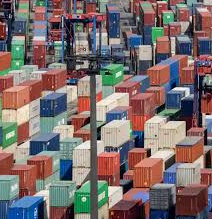Exploring the Effectiveness and Controversies of Verra’s Carbon Credit System
A report published by The Guardian on January 18 has raised serious concerns about the validity of carbon credits generated by avoided deforestation projects accredited by Verra. According to the report, over 90% of these credits are considered “worthless”. This revelation follows previous investigations into Verra’s forestry-related carbon credits, which are used by major corporations such as Shell, Disney, and Gucci. Verra’s partnership with Singapore’s National Environment Agency (NEA), which signed a memorandum of understanding (MoU) with Verra in July 2022 to use these credits for carbon tax regulation, has also come under scrutiny.
The Guardian’s Investigation into Verra’s REDD+ Projects
The Guardian’s report, conducted in collaboration with Die Zeit and SourceMaterial, focused on Verra’s REDD+ (Reducing Emissions from Deforestation and Degradation) projects, specifically those aimed at avoiding deforestation. The analysis is based on three scientific studies, two led by Thales West and one by researchers from Cambridge University.
The findings were alarming. Of the 29 projects analysed, only eight were found to show evidence of meaningful deforestation reduction. The remaining 94% of carbon credits generated from these projects were deemed “unapproved”. Verra had claimed that its accredited projects reduced 94.9 million tonnes of emissions, but the report estimated the actual reduction was closer to 5.5 million tonnes. Additionally, a 2022 study from Cambridge researchers found that in 40 Verra-accredited projects, baseline deforestation rates were overstated by approximately 400%.
Verra’s Defence and Criticisms of Methodology
In response to these findings, Verra CEO David Antonioli dismissed the reports as sensationalist, arguing that the studies did not account for site-specific drivers of deforestation. He also attributed discrepancies in emissions calculations to methodological differences. Verra’s approach uses a baseline scenario constructed by project developers, with a control site for comparison. However, critics argue that this process is vulnerable to manipulation, as developers may select control sites facing high deforestation pressures, inflating the perceived benefits of their projects.
Conversely, the researchers used synthetic controls, which aggregate multiple control sites to provide a statistically weighted average. This approach is more rigorous and commonly used in other disciplines, such as medical studies.
Industry Response to the Report
Several industry figures have contested The Guardian’s claims. Allister Furey, CEO of carbon verifier Sylvera, countered that the figures in the report were overstated. Sylvera’s analysis found that 30% of REDD+ credits stem from “sound” baseline scenarios, contrary to the 6% reported by The Guardian. Other companies, including Everland and South Pole, also disputed the report’s conclusions, though they acknowledged the need for improvements in carbon credit standards.
Despite the controversies, Koh Lian Pin, Professor of Conservation Science at NUS, emphasised the ongoing importance of nature-based climate solutions, including carbon credit schemes. He suggested that while there are flaws in the system, they should not overshadow the potential of carbon credit markets to fund forest protection efforts.
The Future of Carbon Credit Verification
One major challenge for carbon credits is accurately measuring the amount of carbon stored in forests and determining the baseline for comparison. Efforts to develop tools like AI and machine learning to assist in carbon measurement are promising, but the industry’s major hurdle remains predicting future deforestation rates.
Koh believes that reports like The Guardian’s, while possibly sensationalised, are helpful in pushing the industry to improve its methodologies. He argued that the carbon credit system still holds potential if it evolves with better verification standards.
Government Oversight and the Path Forward
The Singaporean government, which has partnered with Verra for carbon tax regulation, has acknowledged the concerns raised by The Guardian’s report. Minister for Sustainability and the Environment Grace Fu reiterated that carbon credits must meet rigorous environmental integrity standards. The government plans to release a whitelist of acceptable carbon credits later this year, and will continue to scrutinise projects to ensure they are aligned with the Paris Agreement’s objectives.
In conclusion, while the Verra scandal raises significant questions about the efficacy of carbon credits, especially those related to forestry, experts argue that with improved methodologies and more transparent verification, these mechanisms could still play a crucial role in tackling climate change.








